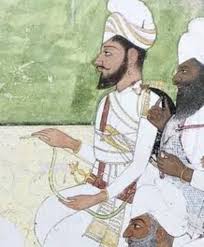DEVINDER SINGH, RAJA (1822-1865), was born on 5 September 1822, the son of Raja Jasvant Singh of Nabha. He ascended the throne of Nabha on 5 October 1840 at the age of eighteen. During the first AngloSikh war of 184546, Devinder Singh whose sympathy was with the Lahore Darbar did not help the British for which reason nearly a quarter of his possessions were confiscated and he was removed from his state and sent to Mathura. He was granted an annual pension of Rs 50,000, and in his place his minor son, Bharpur Singh, was installed on the gaddi. In December 1855, Raja Devinder Singh was shifted to Maharaja Kharak Singh`s mansion in Lahore where he died ten years later, in November 1865.
DHANNA SINGH (1888-1923). a Babar revolutiortary, was born at the village of Bahibalpur, in Hoshiarpur district. His father, Indar Singh, could barely afford to send him to the village primary school where Dhanna Singh learnt to read and write in Punjabi and Urdu. Early in his youth he was converted to radical politics by Kararn Singh, of Daulatpur, leader of the Chakravarti Jatha, and helped organize the Jathas major divans at Mahalpur (March 1921) and at Kukkar Muzara (October 1921). The Chakravarti Jathas of Kishan Singh Gargajj and Karam Singh merging together made up plans at a meeting at Jassoval on 25 December 1922 to maim, plunder or murder informers and helpers of the British government.






